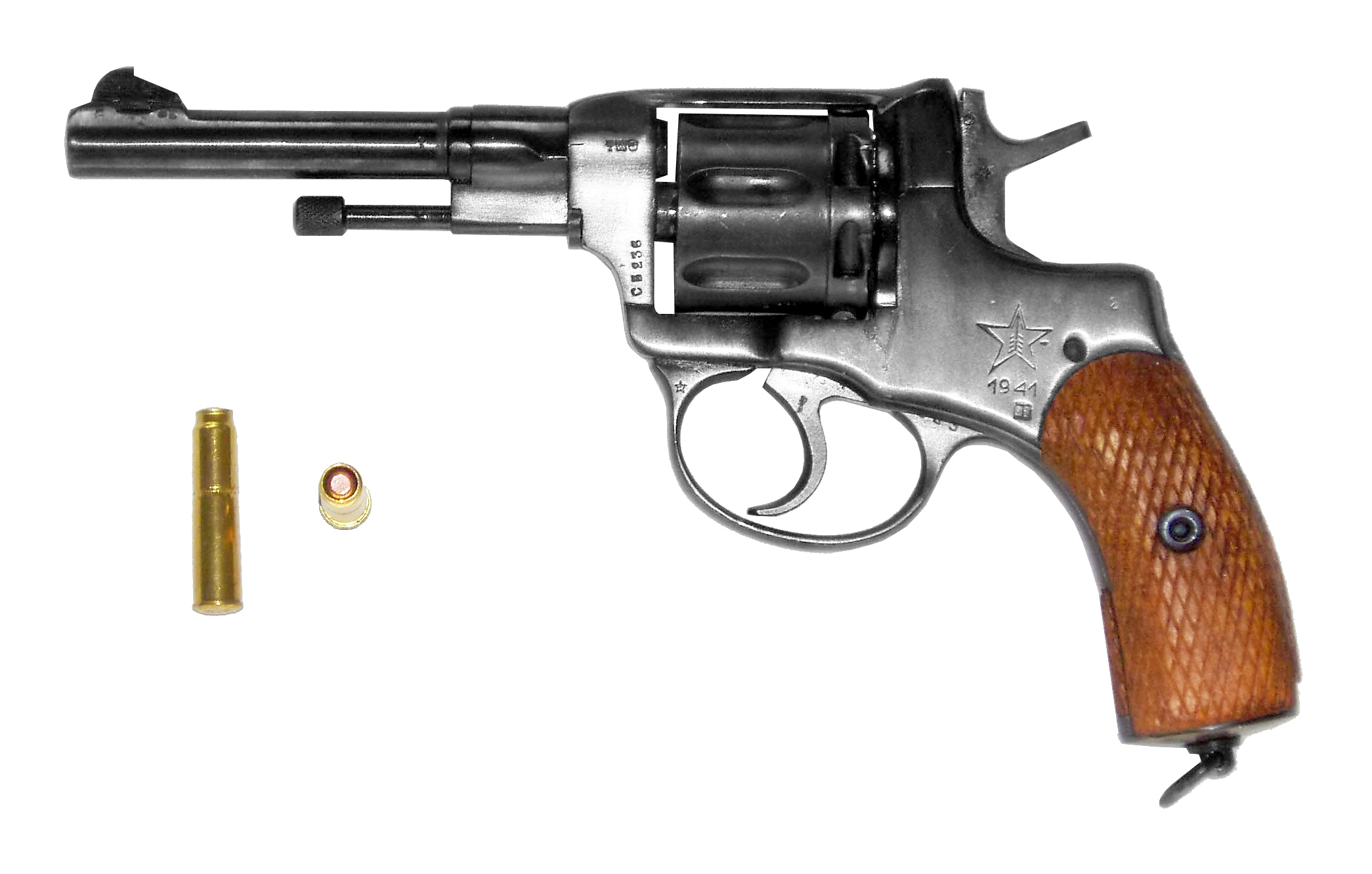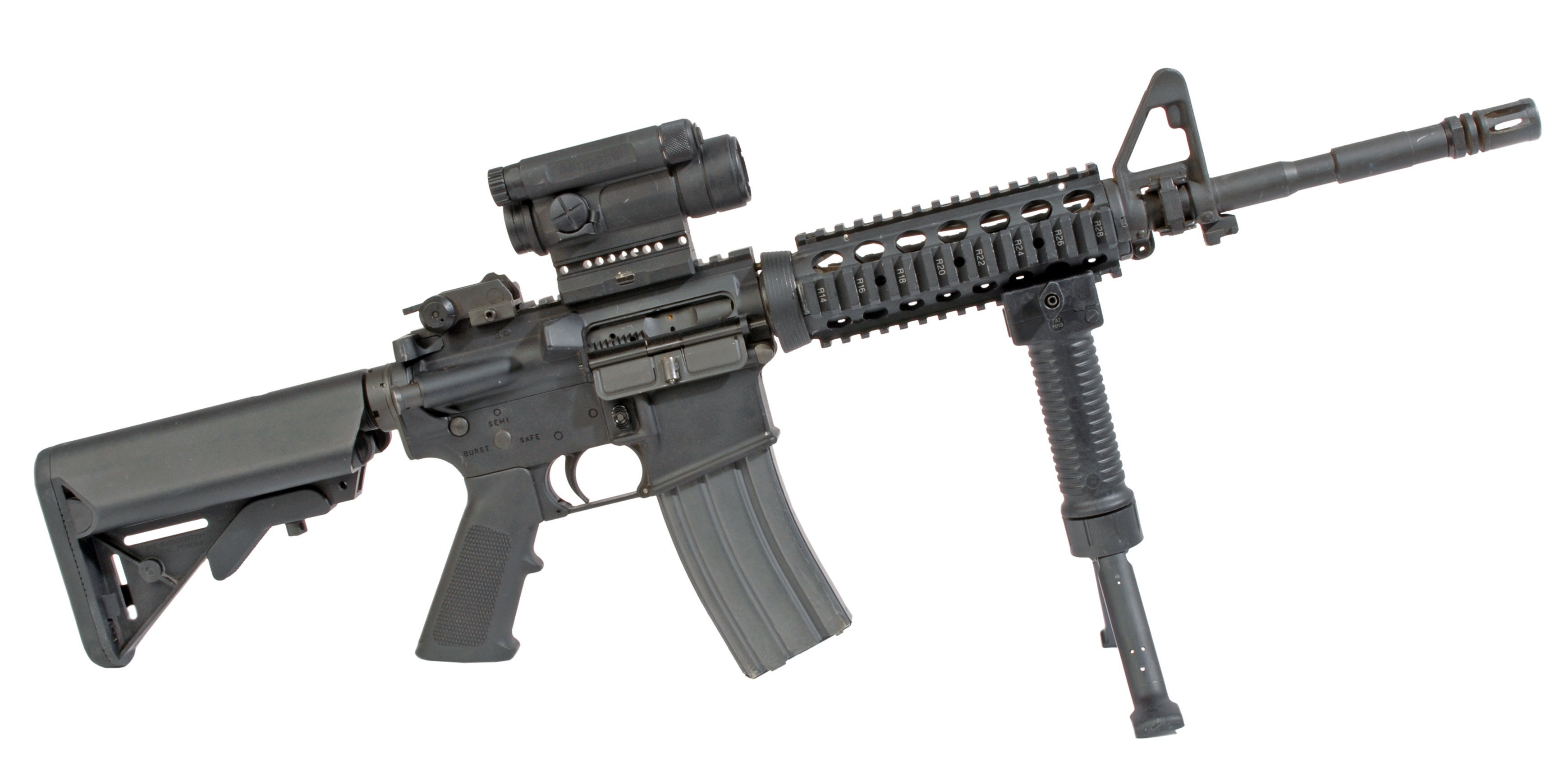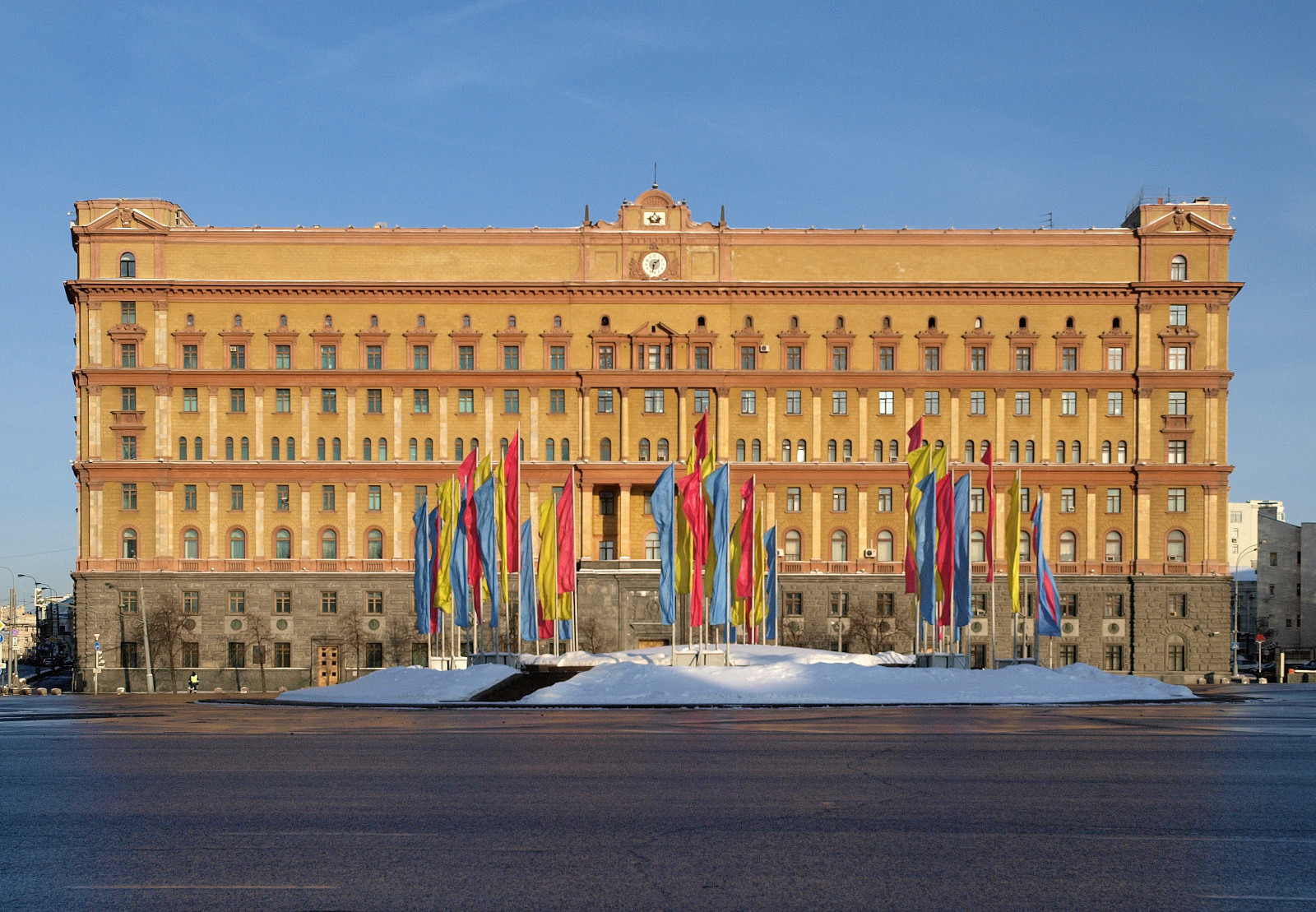|
SR-2 Veresk
The SR-2 "Veresk" (russian: СР-2 «Вереск», English: Heather) is a Russian submachine gun designed to fire the 9×21mm Gyurza pistol cartridge. History Development of a new submachine gun chambered for the 9×21mm Gyurza cartridge (also used by the SR-1 "Vektor" pistol) was launched in the mid-1990s on the request of Russia's Federal Security Service (FSB). A weapon was presented in 1999, developed by TsNIITochMash in Klimovsk, which received the designation of SR-2 (russian: Специальная Разработка 2, translit=Spetsial′naya Razrabotka 2, English: Special Development 2) and nicknamed "Veresk" (" Heather"). "Veresk" and its round were created as a compact weapon capable of engaging enemies wearing Russian class-II body armor (able to stop ordinary pistol bullets, such as 9×19mm Parabellum and 7.62×25mm Tokarev), and soft-skinned vehicles, at distances up to 200 metres. Features The SR-2 "Veresk" differs from most submachine guns by its gas ... [...More Info...] [...Related Items...] OR: [Wikipedia] [Google] [Baidu] |
Submachine Gun
A submachine gun (SMG) is a magazine-fed, automatic carbine designed to fire handgun cartridges. The term "submachine gun" was coined by John T. Thompson, the inventor of the Thompson submachine gun, to describe its design concept as an automatic firearm with notably less firepower than a machine gun (hence the prefix " sub-"). As a machine gun must fire rifle cartridges to be classified as such, submachine guns are not considered machine guns. The submachine gun was developed during World War I (1914–1918) as a close quarter offensive weapon, mainly for trench raiding. At its peak during World War II (1939–1945), millions of SMGs were made for use by regular troops, clandestine commandos and partisans alike. After the war, new SMG designs appeared frequently.Military Small Arms Of The 20th Century. Ian Hogg & John Weeks. Krause Publications. 2000. p93 However, by the 1980s, SMG usage decreased. Today, submachine guns have been largely replaced by assault rifles, w ... [...More Info...] [...Related Items...] OR: [Wikipedia] [Google] [Baidu] |
9×19mm Parabellum
The 9×19mm Parabellum (also known as 9mm Parabellum or 9mm Luger or simply 9mm) is a rimless, tapered firearms cartridge. Originally designed by Austrian firearm designer Georg Luger in 1901, it is widely considered the most popular handgun and submachine gun cartridge due to its low cost and extensive availability. It is a standard cartridge for NATO forces as well as in many non-NATO countries. Since the cartridge was designed for the Luger semi-automatic pistol, it has been given the designation of 9mm Luger by the Sporting Arms and Ammunition Manufacturers' Institute (SAAMI) and the Commission internationale permanente pour l'épreuve des armes à feu portatives (CIP). A 2007 US survey concluded that "about 60 percent of the firearms in use by police are 9mm arabellum and credited 9×19mm Parabellum pistol sales with making semiautomatic pistols more popular than revolvers.Adler, Jerry, et al. "Story of a Gun." ''Newsweek'' 149.18 (30 April 2007): 36–39. MasterFILE ... [...More Info...] [...Related Items...] OR: [Wikipedia] [Google] [Baidu] |
Submachine Guns Of Russia
A submachine gun (SMG) is a magazine-fed, automatic carbine designed to fire handgun cartridges. The term "submachine gun" was coined by John T. Thompson, the inventor of the Thompson submachine gun, to describe its design concept as an automatic firearm with notably less firepower than a machine gun (hence the prefix " sub-"). As a machine gun must fire rifle cartridges to be classified as such, submachine guns are not considered machine guns. The submachine gun was developed during World War I (1914–1918) as a close quarter offensive weapon, mainly for trench raiding. At its peak during World War II (1939–1945), millions of SMGs were made for use by regular troops, clandestine commandos and partisans alike. After the war, new SMG designs appeared frequently.Military Small Arms Of The 20th Century. Ian Hogg & John Weeks. Krause Publications. 2000. p93 However, by the 1980s, SMG usage decreased. Today, submachine guns have been largely replaced by assault rifles, w ... [...More Info...] [...Related Items...] OR: [Wikipedia] [Google] [Baidu] |
Personal Defense Weapons
Personal may refer to: Aspects of persons' respective individualities * Privacy * Personality * Personal, personal advertisement, variety of classified advertisement used to find romance or friendship Companies * Personal, Inc., a Washington, D.C.-based tech startup * The Personal, a Canadian-based group car insurance and home insurance company * Telecom Personal, a mobile phone company in Argentina and Paraguay Music * ''Personal'' (album), the debut album by R&B group Men of Vizion * ''Personal'', the first album from singer-songwriter Quique González, and the title song * "Personal" (Aya Ueto song), a 2003 song by Aya Ueto from ''Message'' * "Personal" (Hrvy song), a song from ''Talk to Ya'' * "Personal" (The Vamps song), a song from ''Night & Day'' *"Personal", a song by Kehlani from '' SweetSexySavage'' Books * ''Personal'' (novel), a 2014 novel by Lee Child See also * The Personals (other) * Person * Personality psychology Personality psychology ... [...More Info...] [...Related Items...] OR: [Wikipedia] [Google] [Baidu] |
List Of Russian Weaponry
The following is a list of modern Russian small arms and light weapons which were in service in 2016: Handguns Revolvers Pistols Special purpose Submachine guns Special purpose Shotguns Rifles Bolt-action Semi-automatic Selective-fire Special purpose Anti-materiel rifles Machine guns Squad automatic weapons (SAWs) General-purpose Heavy Hand grenades Fragmentation Anti-tank Grenade launchers Stand-alone Attached Automatic grenade launchers Rocket launchers General purpose Incendiary and thermobaric Special purpose Recoilless rifles Mortars Anti-tank guided missiles Man-portable air defense system Landmines See also * List of equipment of the Russian Ground Forces * List of Russian weaponry makers References {{DEFAULTSORT:Russian small arms and light weapons Weapons of Russia Lists of weapons Firearms of Russia, Russian and Soviet milita ... [...More Info...] [...Related Items...] OR: [Wikipedia] [Google] [Baidu] |
Picatinny Rail
The Picatinny rail ( or ), or Pic rail for short, also known as a MIL-STD-1913 rail, 1913 rail or STANAG 2324 rail (cancelled), is a military standard rail interface system that provides a mounting platform for firearm accessories. It was originally used for mounting of scopes atop the receivers of larger caliber rifles. Once established, its use expanded to also attaching other accessories, such as: iron sights, tactical lights, laser aiming modules, night vision devices, reflex sights, holographic sights, foregrips, bipods, slings and bayonets. An updated version of the rail is adopted as a NATO standard as the STANAG 4694 NATO Accessory Rail. Significance Because of their many uses, Picatinny rails and accessories have replaced iron sights in the design of many firearms and available as aftermarket add-on parts for most actions that do not have them integrated, and they are also on the undersides of semi-automatic pistol frames and grips. When adding a Picat ... [...More Info...] [...Related Items...] OR: [Wikipedia] [Google] [Baidu] |
Heckler & Koch MP5
The Heckler & Koch MP5 (german: Maschinenpistole 5) is a 9x19mm Parabellum submachine gun, developed in the 1960s by a team of engineers from the German small arms manufacturer Heckler & Koch. There are over 100 variants and clones of the MP5, including some semi-automatic versions. The MP5 is one of the most widely used submachine guns in the world,Hogg, Ian (2002). ''Jane's Guns Recognition Guide''. Jane's Information Group. . having been adopted by over forty nations and numerous military, law enforcement, intelligence, and security organizations. In 1999, Heckler & Koch developed the UMP, the MP5's successor. Despite its higher cost, the MP5 remained the more successful of the two options. History Heckler & Koch, encouraged by the success of the G3 automatic rifle, developed a family of small arms consisting of four types of firearms all based on a common G3 design layout and operating principle. The first type was chambered for 7.62×51mm NATO, the second for the 7.6 ... [...More Info...] [...Related Items...] OR: [Wikipedia] [Google] [Baidu] |
AK-47
The AK-47, officially known as the ''Avtomat Kalashnikova'' (; also known as the Kalashnikov or just AK), is a gas operated, gas-operated assault rifle that is chambered for the 7.62×39mm cartridge. Developed in the Soviet Union by Russian small-arms designer Mikhail Kalashnikov, it is the originating firearm of the Kalashnikov rifle, Kalashnikov (or "AK") family of rifles. After more than seven decades since its creation, the AK-47 model and its variants remain one of the most popular and widely used firearms in the world. The number "47" refers to the year the rifle was finished. Design work on the AK-47 began in 1945. It was presented for official military trials in 1947, and, in 1948, the fixed-Stock (gun), stock version was introduced into active service for selected units of the Soviet Army. In early 1949, the AK was officially accepted by the Soviet Armed Forces and used by the majority of the member states of the Warsaw Pact. The model and its variants owe their glob ... [...More Info...] [...Related Items...] OR: [Wikipedia] [Google] [Baidu] |
SR-3 Vikhr
The SR-3 Vikhr (''СР-3 Вихрь'', Russian for "whirlwind") is a Russian 9×39mm compact assault rifle. It was developed by A. D. Borisov, V. N. Levchenko and A. Tyshlykov at TsNIITochMash (Central Institute for Precision Machine Building) in the early 1990s and was manufactured in 1994. Heavily based on the AS Val, but lacks an integral suppressor, has a newly designed folding stock and charging handle for ease of concealed carry. The abbreviation "SR" stands for ''spetsialnaya razrabotka'' — special development. Because the SR-3 Vikhr is a rather expensive weapon for its small size and weight, it was not mass produced for the Russian military. It was primarily used by the Russian Special Operations Forces and certain government officials' security details. History After the adoption of the SR-3 Vikhr, the FSB established new operational requirements with a goal to combine the qualities of the SR-3, AS Val and VSS Vintorez, resulting in a new variant designated as the SR- ... [...More Info...] [...Related Items...] OR: [Wikipedia] [Google] [Baidu] |
SR-1 Vektor
The SR-1 Vektor also known as the Gyurza (''Гюрза'', Russian for " blunt-nosed viper") or Serdyukov SPS is a 9×21mm Gyurza semi-automatic pistol designed for the Russian military. The firearm is currently produced as the SR1M. Design details The operating system is based on the Beretta 92, utilizing a dropping block. The frame is polymer and steel. While the SR-1 does not have a traditional manual safety, it is equipped with a grip safety that disengages the trigger mechanism, as well as a trigger safety to prevent fire when the trigger is not depressed. Additionally the hammer must also be placed into half-cock to engage the sear and enable double action firing. Users * – Armed Forces of the Kyrgyz RepublicАлександр Ким. Это — спецназ! Отдельная бригада специального назначения Минобороны отметила десятую годовщину своего существования // газета «� ... [...More Info...] [...Related Items...] OR: [Wikipedia] [Google] [Baidu] |
Federal Security Service
The Federal Security Service of the Russian Federation (FSB) RF; rus, Федеральная служба безопасности Российской Федерации (ФСБ России), Federal'naya sluzhba bezopasnosti Rossiyskoy Federatsii, fʲɪdʲɪˈralʲnəjə ˈsluʐbə bʲɪzɐˈpasnəstʲɪ rɐˈsʲijskəj fʲɪdʲɪˈratsɨɪ) is the principal security agency of Russia and the main successor agency to the Soviet Union's KGB; its immediate predecessor was the Federal Counterintelligence Service (FSK) which was reorganized into the FSB in 1995. The three major structural successor components of the former KGB that remain administratively independent of the FSB are the Foreign Intelligence Service (SVR), the Federal Protective Service (FSO), and the Main Directorate of Special Programs of the President of the Russian Federation (GUSP). The primary responsibilities are within the country and include counter-intelligence, internal and border security, counter-terr ... [...More Info...] [...Related Items...] OR: [Wikipedia] [Google] [Baidu] |







